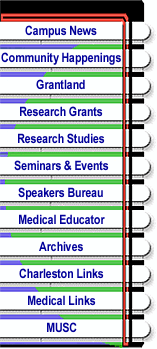
Return to Main Menu |
JAMA
cites aging RN workforce for future shortage
CHICAGO - The nation's registered nurse (RN) workforce is aging
significantly and the number of full-time equivalent RNs per capita is
forecast to peak around the year 2007 and decline steadily thereafter,
according to an article in the June 14 issue of The Journal of the American
Medical Association (JAMA).
Peter I. Buerhaus, Ph.D., R.N., from the Vanderbilt University School
of Nursing, Nashville, Tenn., and colleagues, conducted a study of employment
trends of recent groups of RNs over their lifetime based on U.S. Bureau
of the Census Current Population Surveys between 1973 and 1998. Recent
workforce trends were used to forecast future age and employment of RNs.
The researchers found the average age of working RNs increased by 4.5 years
between 1983 and 1998. The number of full-time equivalent RNs observed
in recent groups has been
approximately 35 percent lower than that observed at similar ages for
groups that entered the labor market 20 years earlier.
"Over the next two decades, this trend will lead to a further aging
of the RN workforce because the largest cohorts of RNs will be between
age 50 and 69 years," the researchers write. "Within the next 10 years,
the average age of RNs is forecast to be 45.4 years, an increase of 3.5
years over the current age, with more than 40 percent of the RN workforce
expected to be older than 50 years. ...By the year 2020, the RN workforce
is forecast to be roughly the same size as it is today, declining nearly
20 percent below projected RN workforce requirements."
The authors explain that the aging of the RN workforce has resulted
from the expansion of career opportunities for young women and a decrease
in the number of young women choosing nursing as a career.
Women continue to make up more than 90 percent of the RN workforce.
The authors believe that long-term strategies to increase RN supply
are needed. As shortages develop during the next 20 years, it can
be expected that RN wages will rise and working conditions will be improved
to attract more women and men to choose nursing as a career.
Yet, these effects will occur slowly, and employers may have to rely
on controversial strategies, such as substituting other personnel for RNs
and hiring nurses from other countries. The authors recommend that
employers and nursing leaders plan now how best to use the increasingly
scarce supply of RNs to deliver patient care in the future.
"The impending decline in the supply of RNs will come at a time when
the first of 78 million baby boomers begin to retire and enroll in the
Medicare program in 2010," the authors write. "Because RNs are vital
in ensuring access to and quality of health care, it is critical that policy
makers understand, and develop appropriate responses to, the implications
of a rapidly aging RN workforce."
|


